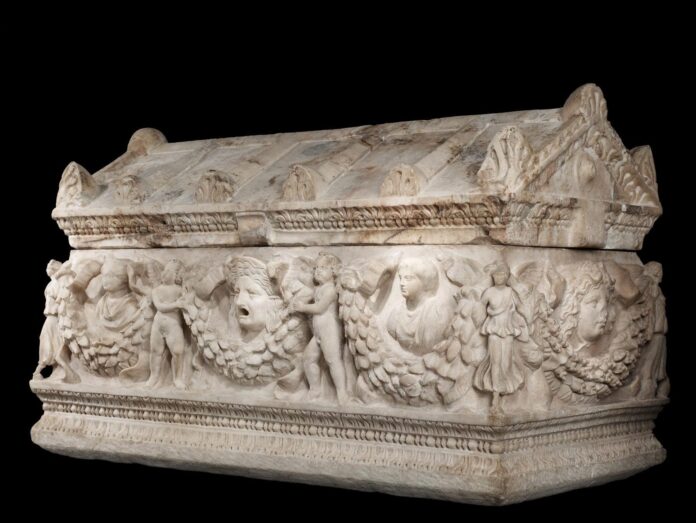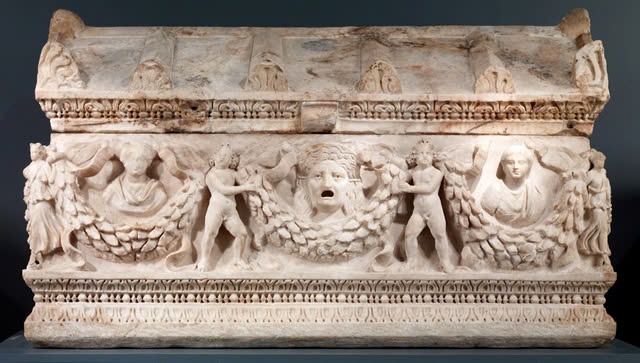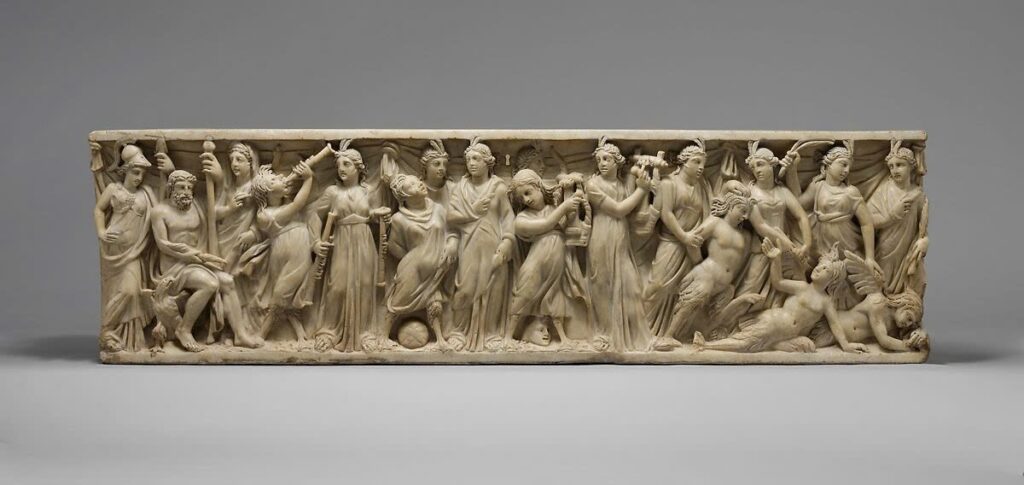Discovered in Rome, the marble sarcophagus of Dionysos is a breathtaking artifact from 260-270 AD, showcasing the rich artistry and mythology of the late Roman Empire. This exquisitely carved piece, known as the “Triumph of Dionysos and the Seasons,” offers a captivating glimpse into Roman beliefs about life, death, and the afterlife.
A Mythological Procession in Stone
At the heart of the relief, Dionysos, the Greek god of wine, fertility, and revelry, is depicted riding atop a panther, a creature often associated with his cult. His serene and confident posture suggests divine authority, reinforcing his role as a deity who bridged the worlds of mortals and the divine.

Surrounding him are four powerful figures representing the seasons—Winter, Spring, Summer, and Autumn. Unlike traditional depictions of the seasons as graceful women, these figures appear as strong young men, possibly symbolizing enduring strength and the cyclical nature of time. Each season is distinguished by unique symbols, illustrating the passage of the year in a way that intertwines nature, mythology, and human experience.
The Meaning Behind the Sarcophagus
This sarcophagus was likely commissioned for a wealthy Roman noble or official, possibly someone devoted to the Bacchic Mysteries, a religious movement centered on Dionysos’ promise of spiritual rebirth and eternal joy. The imagery suggests that the deceased hoped for a blissful afterlife, mirroring the god’s own journey between life and death.

Key Symbolism in the Artwork
Dionysos on the Panther → Divine power, ecstasy, and transformation
The Four Seasons → The cycle of life, renewal, and the eternal passage of time
Mythological Procession → Celebration of the afterlife, a journey toward divine bliss

A Testament to Late Roman Artistry
The Roman Empire in the 3rd century AD was a period of both artistic brilliance and political turmoil. This sarcophagus reflects the era’s fusion of Greek mythology with Roman funerary traditions, creating a masterpiece that not only honors the deceased but also conveys a profound spiritual message.

With its intricate craftsmanship, dynamic figures, and rich symbolism, the marble sarcophagus of Dionysos remains a stunning example of Roman sculpture, reminding us of the civilization’s deep fascination with myth, nature, and the eternal journey beyond death.

